It is no longer possible to record podcasts using your computer's webcam and built-in microphone. Video content consumption has increased significantl
It is no longer possible to record podcasts using your computer’s webcam and built-in microphone. Video content consumption has increased significantly, so choosing a quality camera for recording your podcast is important. The Panasonic Lumix FZ80 is an excellent option, enabling you to create visuals and audio for both video and audio platforms.
To learn more about the Panasonic Lumix FZ80 and why it’s a great choice for podcasting, check out our in-depth review by clicking here.
About Panasonic Lumix FZ80
The Panasonic Lumix FZ80 was released in January 2017 as an update to the popular Lumix FZ70. It is known as the FZ82 outside of America.
The camera features a 60x zoom lens, equivalent to a focal range of 20-1200mm, making it ideal for capturing distant subjects. It also boasts a maximum aperture of f/2.8 at the wide end and f/5.9 at the telephoto end.
It is a great value, a lightweight and compact all-in-one camera that can capture any subject. At its current price point, it’s one of the most affordable cameras you can buy.
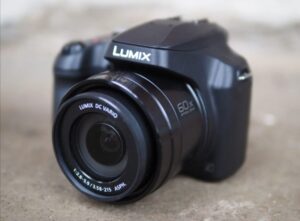
The release of the Panasonic Lumix FZ80 represented another step forward in digital camera technology, offering advanced features such as long-range zoom and remote control capabilities while maintaining affordability for amateur photographers.
 Key Features
Key Features
- 18.1MP 1/2.3″ MOS Sensor
- ISO 80 – 3200( expands to 6400)
- Optical Image Stabilization
- 10.0fps continuous shooting
- Lumix DC Vario 60x Zoom Lens
- 20-1200mm (35mm Equivalent)
- 1.166m-Dot Electronic Viewfinder
- 3.0″ 1.04m-Dot Touchscreen LCD Monitor
- 4K UHD Video Recording at 30 fps
- Built-In Wi-Fi Connectivity
- 4K Photo Mode
- Post Focus and Focus Stacking
- POWER O.I.S., DFD AF System
Design & Build Quality
The Panasonic LUMIX Digital Camera DC FZ80K has a curved body designed to fit comfortably in your hand. To ensure secure handling, the camera handle was given a textured finish that prevents slipping.
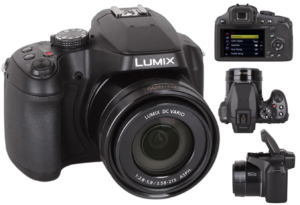
The Panasonic LUMIX FZ80 is a bridge camera that may not be especially portable. Still, its lightweight design (at 1.36 pounds and compact size (3.7″ x 5.1″ x 4.7″) make it one of the most portable superzoom cameras available.
Shaped like a mini-DSLR, the Panasonic Lumix FZ82 comes with an ergonomic handgrip and textured area for your thumb. There is also a control wheel above this, allowing you to adjust settings swiftly and use the touch screen.
Function buttons that can be tailored to suit your liking are also provided. However, if you’d prefer not to change them, pre-set options are just as helpful and come with labeled descriptions on the camera itself. The build quality is satisfactory despite its plastic feel.
Video Quality
The FZ80 can capture videos in 4K resolution at 30fps and 100Mbps compression rate, as well as 1080p (60fps/28Mbps or 30fps/20Mbps) and 720p (30fps/10Mbps) resolutions. All video formats are in MP4, but it does not support AVCHD compression for any resolution other than 1080p. Unfortunately, the 24 fps frame rate option is unavailable.
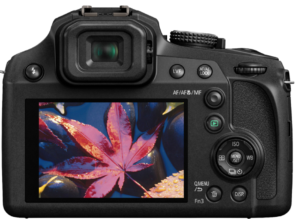 Panasonic has equipped their 4k Photo cameras with special software that makes it easy to capture multiple video frames at once, then go through the footage and find the ideal frame to be saved as a JPEG image.
Panasonic has equipped their 4k Photo cameras with special software that makes it easy to capture multiple video frames at once, then go through the footage and find the ideal frame to be saved as a JPEG image.
The video features of this camera include Snap Movie, which records clips between two and eight seconds long. Furthermore, you can set up a focus pull by tapping the screen to determine the starting and ending points. Additionally, there are options for monochrome to color fade-ins or outs and exposure fades. Lastly, Time Lapse and Stop Motion modes can also be accessed through the main menus.
The FZ80K’s optical stabilization may not be enough to provide stable handheld footage when zoomed in beyond 500mm, and its inability to articulate the screen makes it unsuitable for vlogging.
Image Quality
This camera boasts an impressive 60x optical zoom to take sharp photos from any distance. This is one of the key selling points of this camera, as it provides a wide range of zoom capabilities.
The Panasonic LUMIX FZ80 / FZ82 features Power O.I.S image stabilization, which counteracts camera shake and allows for handheld shots at slower shutter speeds. It has an ISO range of 80-3200, so a tripod may be necessary for longer exposures or when using the maximum 1200mm zoom with its relatively slow f5.9 aperture.
The FX80K produces high-quality images and is one of the best superzooms on the market, especially when there is plenty of light. Unfortunately, its dynamic range could be better and may need help capturing detail in shadows and highlights.
The Panasonic FZ82 performed admirably in handling chromatic aberrations, only exhibiting minimal purple fringing effects when encountering high-contrast scenes. Likewise, its pop-up flash gave satisfactory indoor results with no red-eye and appropriate lighting.
On the FZ82, you can choose from various shooting modes, including Intelligent Auto and Creative Controls with eight digital effects. The Scene mode has 25 settings, and there is also a Panorama option. You’ll find a Custom setting and one dedicated to video recording.
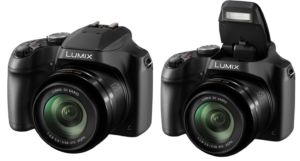
Sound Quality
The Lumix camera enables you to capture audio in both stereo and mono with its built-in microphone. Unfortunately, the device does not have any jacks for external microphones or headphones, which limits your control over sound quality. If you are only recording basic audio, this should be sufficient though.
Specifications |
|
|
|
RecordingInternal Recording Modes
Recording Limit: Up to 30 Minutes Video Formats: MPEG-4, AVCHD Broadcast Output: NTSC |
|
|
|
|
|
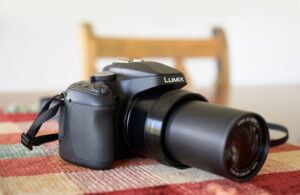
Final Verdict On Panasonic Lumix FZ80
| Outstanding 4K video and image quality | Poor image quality when shooting in high ISO settings |
| Extremely lightweight and small in size | No ability to replace or modify the fixed screen |
| Intuitive touchscreen interface | Lack of a microphone port |
| Simple to operate | Inadequate viewfinder |
| Robust optical zoom capabilities | Unstable performance when using full zoom |
| Impressive image stabilization technology | |
| Excellent cost-efficiency ratio |
The Panasonic Lumix FZ80 / FZ82 is an excellent all-in-one camera with versatility, ease of use, and advanced features. It has a powerful 20.1MP sensor and 4K video recording capabilities, autofocus, and a vari-angle LCD screen. The 60x optical zoom makes it perfect for podcasters who want to go beyond what their smartphones or compact cameras can do when capturing images or video. For anyone looking for an affordable digital camera with high-quality performance, the LUMIX FZ80 from Panasonic is worth considering.
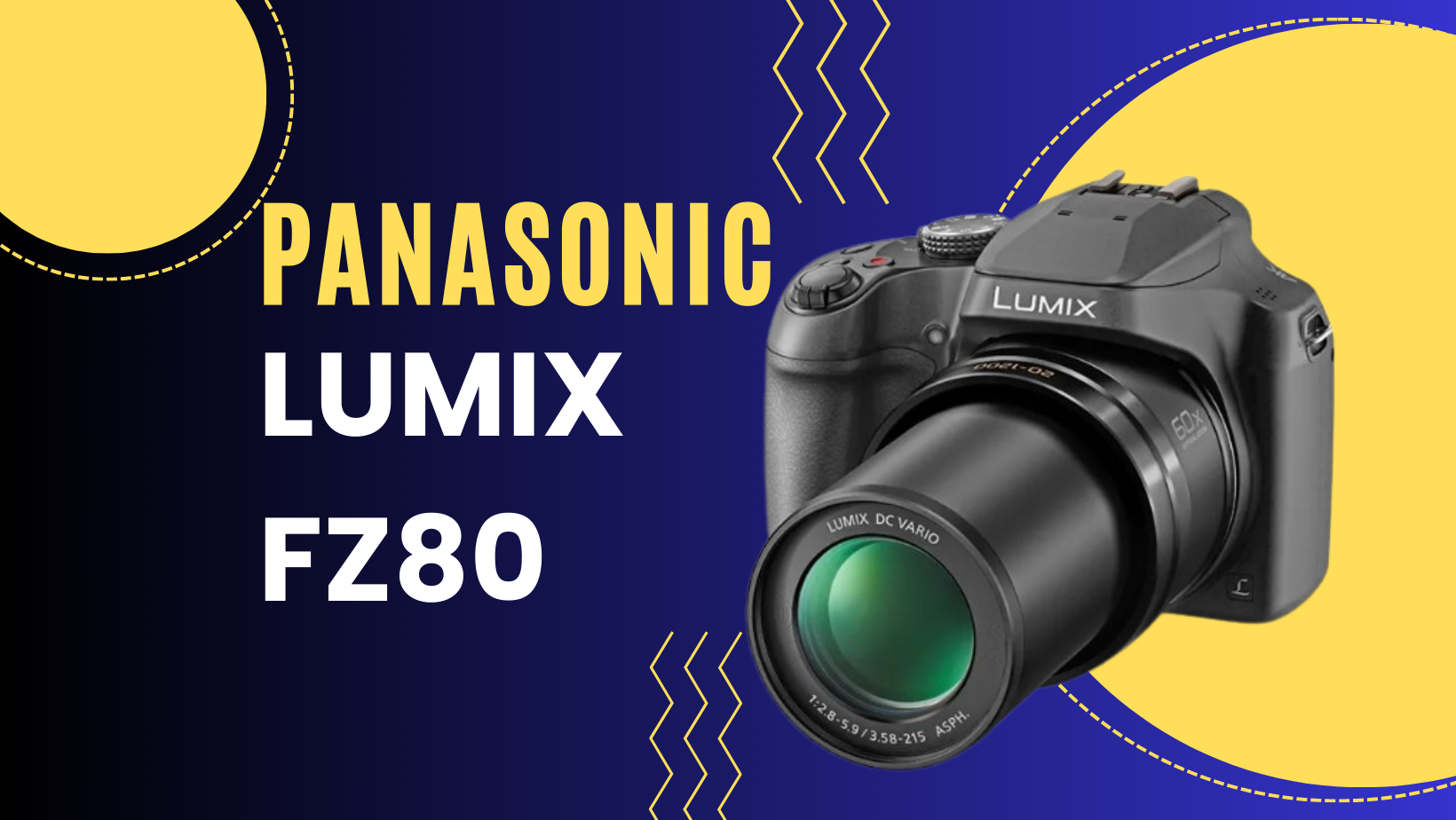
 Dimension
Dimension
COMMENTS